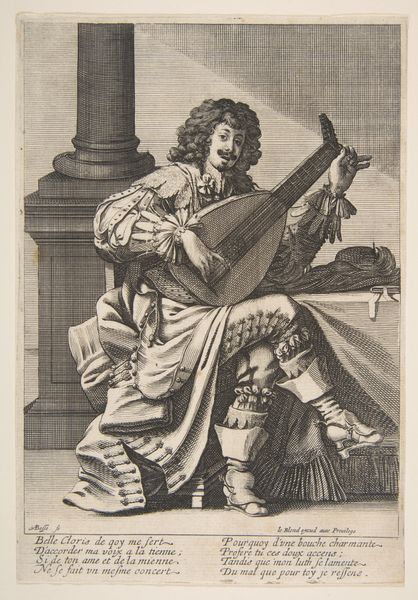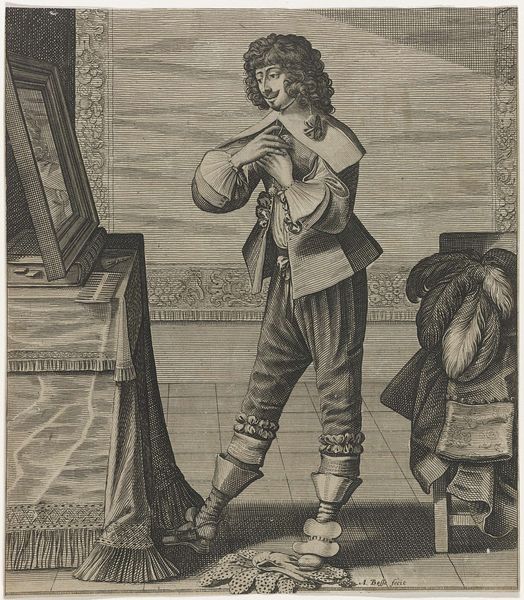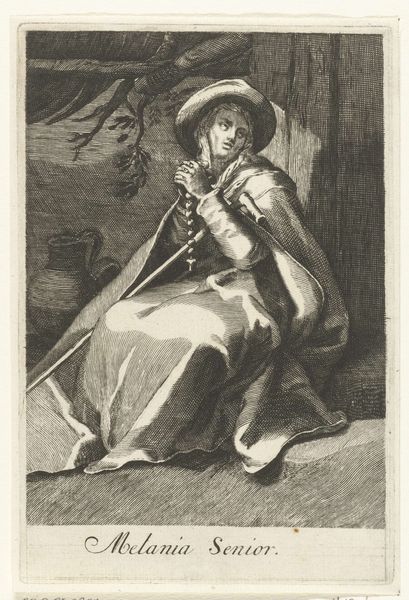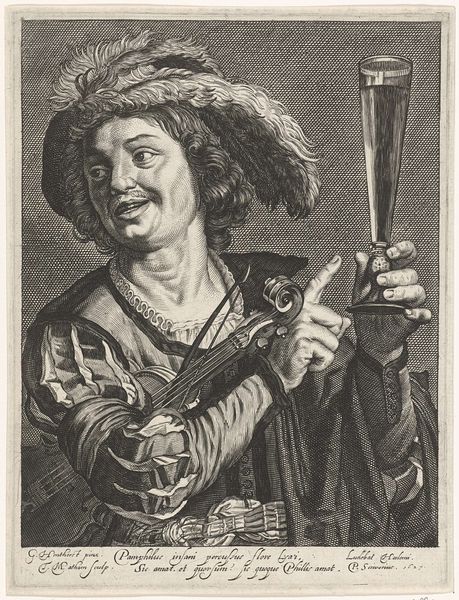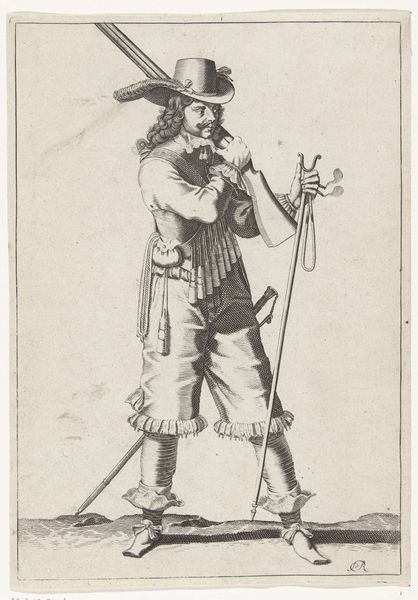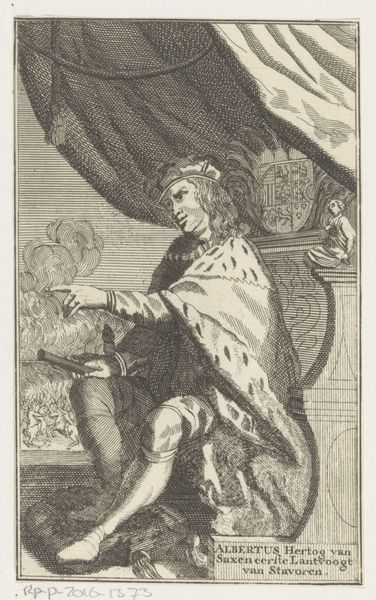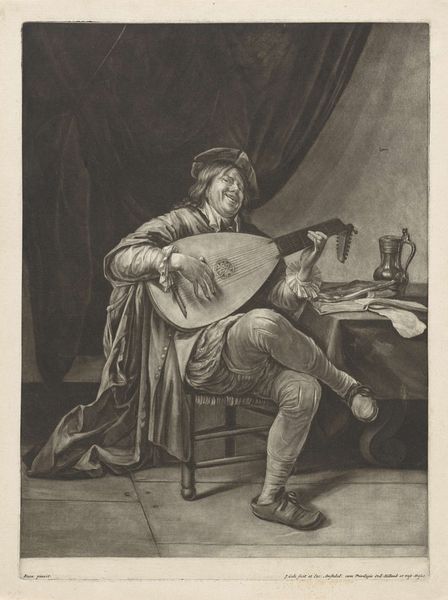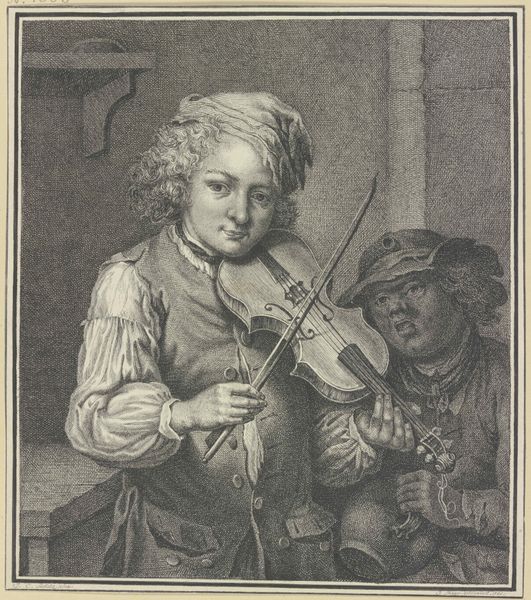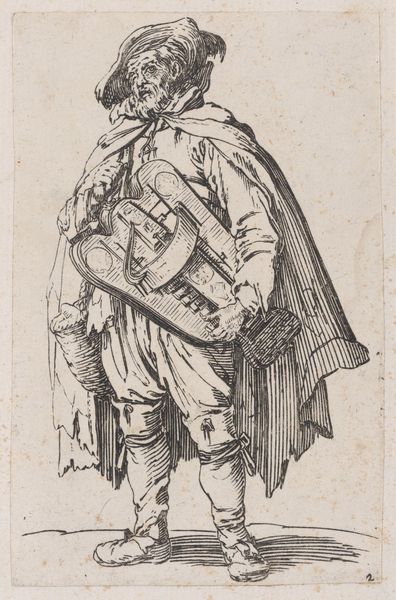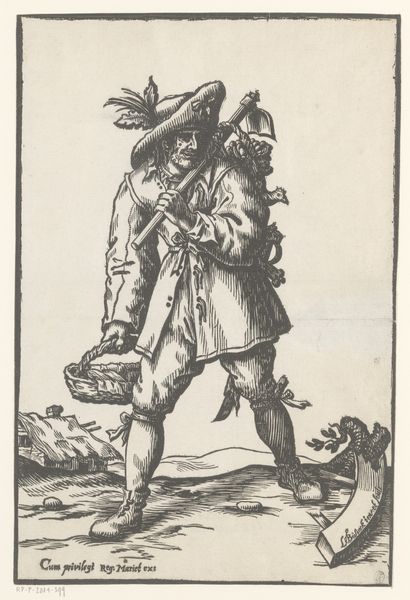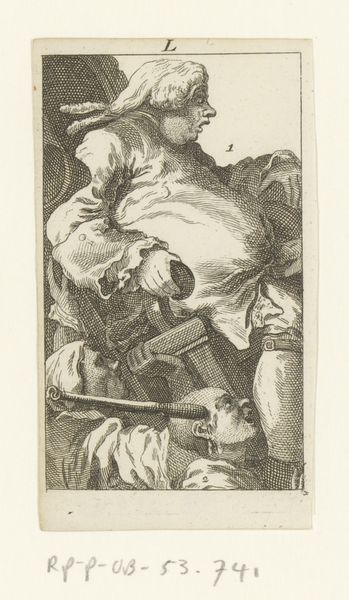
Dimensions: height 255 mm, width 175 mm
Copyright: Rijks Museum: Open Domain
Ludwig Büsinck crafted this print of a lute player in 1630. The lute, an instrument descended from the Arabic oud, was then a symbol of harmony and refined culture. We see here not just an instrumentalist but an embodiment of musical devotion, emphasized by the open book of psalms and the inscription to praise the Lord with strings. The lute's symbolism goes far beyond mere entertainment. In ancient Greece, stringed instruments were associated with Apollo, god of music and healing. The lute appears in many forms throughout art history, such as in Renaissance paintings, where it represents divine harmony and the power of music to elevate the soul. In Dutch Golden Age paintings, a broken lute string can even symbolize transience and the fleeting nature of life. Note the player's expressive face, a direct channel to the soul's depths. This pursuit of emotional and spiritual expression through music reflects a timeless human desire that resonates across centuries, demonstrating the enduring power of music to tap into our collective unconscious.
Comments
No comments
Be the first to comment and join the conversation on the ultimate creative platform.
